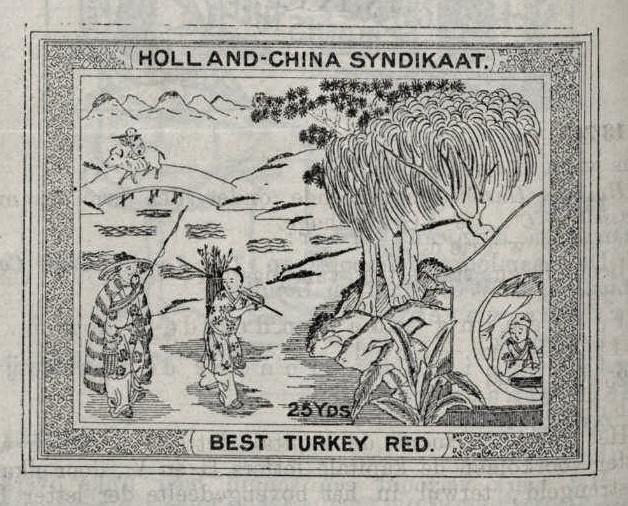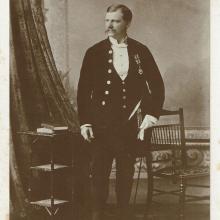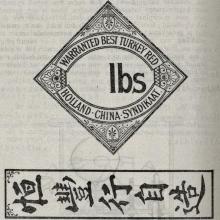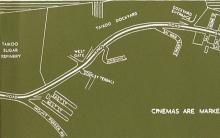Charles Gesner van der Voort had started his career in Rotterdam, at Holland-China Trading Company (HCHC). In 1938, he went to Shanghai for the firm. The Japanese interned him, and most other Dutch nationals, from 1943-45. In camp, he met his wife Nancy and they married after the war. After a leave in The Netherlands, they returned to the Orient, where Charles continued to work for HCHC in Hong Kong.
Royal Dutch Library has a great site for retrieving printed matter, especially newspapers. Several registrations of trade marks were found in Nederlandse staatscourant (Dutch State Gazette), accompanied by a drawing of the trade mark (Delpher.nl).
Holland-China Syndikaat was the organisation which preceded Holland-China Trading Company, which was founded in 1903.
The caption reads:
"13740
Naam van den inzender:
De handelsvennootschap onder de firma van M. & R. de Monchy, te Rotterdam.
Soort der waren:
Manufacturen.
Dagteekening waaronder de inschrijving heeft plaats gehad:
20 mei 1899.
Het merk bestaat uit de afbeelding van een Chineesch landschap; op den achtergrond een bergwand, links over eene rivier een brug, waarover een ruiter gaat; op den voorgrond, langs een hellenden weg, twee menschen, een met hoed en mantel en een vischhengel dragende, een ander zonder hoofddeksel en een soort korenschoof dragende. Beiden treden op een huisje toe, voor welks geopend raam eene vrouw zit. Achter dit huisje vertoonen zich drie gelijkvormige boomen en een van een andere soort; vóór het huisje eene sierplant. Het geheel is omgeven door eenen geornamenteerden rand, waarin bovenaan in een vak de woorden: Holland-China Syndicaat en onderaan, ook in een vak, de woorden: Best Turkey Red."
One of the main trade products of Holland-China Syndicaat and Holland-China Trading Company, at least in the early years, were clothing and fabrics, produced in the Eastern part of the Netherlands, Twente. The brand name "Best Turkey Red" refers to a specific red colour, which was used to dye cotton in the 18th and 19th century.
<a href="https://old.gwulo.com/%3Ca%20href%3D"https://en.wikipedia.org/wiki/Turkey_red">https://en.wikipedia.org/wiki/Turkey_red" rel="noreferrer nofollow">en.wikipedia.org/wiki/Turkey_red</a>
"Turkey red is a color that was widely used to dye cotton in the 18th and 19th century. It was made using the root of the rubia plant, through a long and laborious process. It originated in India or Turkey, and was brought to Europe in the 1740s. In France it was known as rouge d'Andrinople.
History
As the Industrial Revolution spread across Europe, chemists and manufacturers sought new red dyes that could be used for large-scale manufacture of textiles. One popular color imported into Europe from Turkey and India in the 18th and early 19th century was Turkey red, known in France as rouge d'Andrinople. Beginning in the 1740s, this bright red color was used to dye or print cotton textiles in England, the Netherlands and France. Turkey red used the root of the rubia plant as the colorant, but the process was long and complicated, involving multiple soaking of the fabrics in lye, olive oil, sheep's dung, and other ingredients. The fabric was more expensive but resulted in a fine bright and lasting red, similar to carmine, perfectly suited to cotton. The fabric was widely exported from Europe to Africa, the Middle East and America. In 19th-century America, it was widely used in making the traditional patchwork quilt."
Courtesy Koninklijke Bibliotheek (Royal Dutch Library), Nederlandsche staatscourant, 1 June 1899




